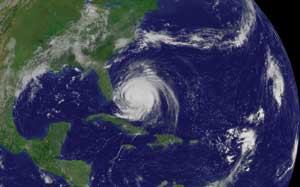Back to Business In some ways, dealing with the aftermath of a hurricane can be just as challenging as preparing for the storm.
Property managers returning to an apartment community after a hurricane have to be prepared for anything: battered buildings, downed power lines, water and sewage problems, even alligators in the apartments or the community’s pool.
That’s why many multifamily companies don’t allow residents to enter the property until the buildings have been cleared for occupancy. “We need to make sure it’s safe to live in,” says Martin. Once that’s established, CALEX allows residents in and keeps looters out by requiring proof of residence–a utility bill, for example, since people don’t always have their current address on their driver’s license. (The company reminds tenants to take such a document with them when they evacuate.)
Still, repairing the damage and cleaning up the debris will take days, if not weeks, a situation that demands patience from tenants and on-site staff. “When the storm’s done,” Martin says, “we remind people to go back and take care of residents, because they need that comfort, too.”
Coastal Costs
The bills were still coming at press time for hurricanes Charley, Frances, and Ivan, but the tally is already in the billions of dollars. (Early reports suggested that Charley alone caused roughly $7 billion in damage.) Here are five of the most costly hurricanes to hit the U.S. mainland.
1. Andrew (1992) $26.5 billion2. Hugo (1989) $7.0 billion3. Floyd (1999) $4.5 billion4. Isabel (2003) $4.0 billion5. Fran (1996) $3.2 billion
Source: National Oceanic and Atmospheric Administration. (Dollars have not been adjusted for inflation.)
